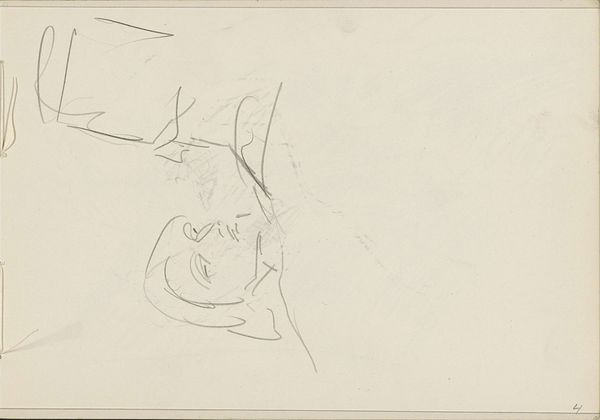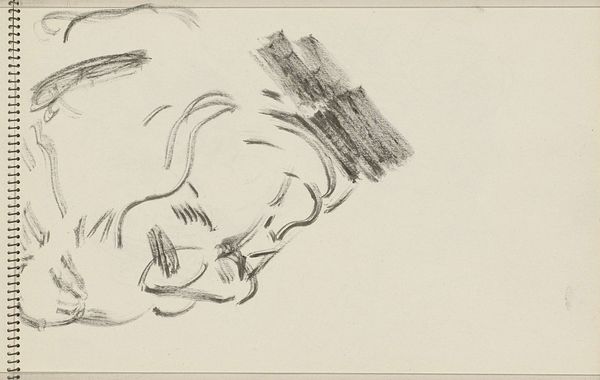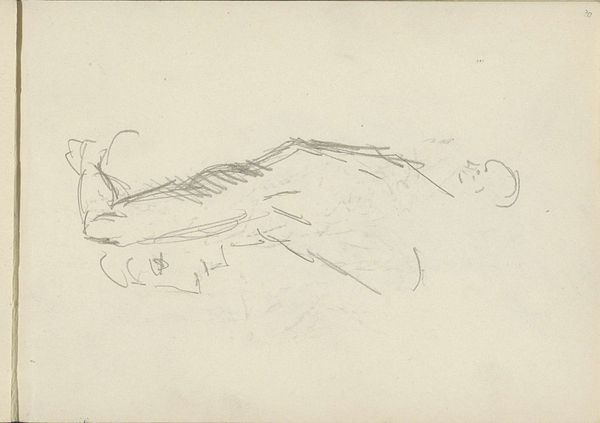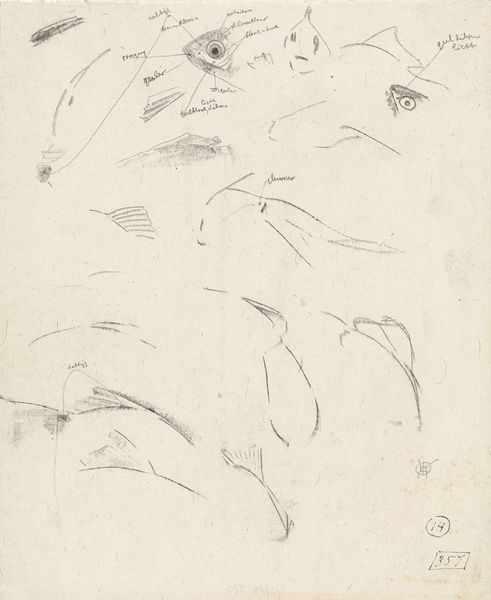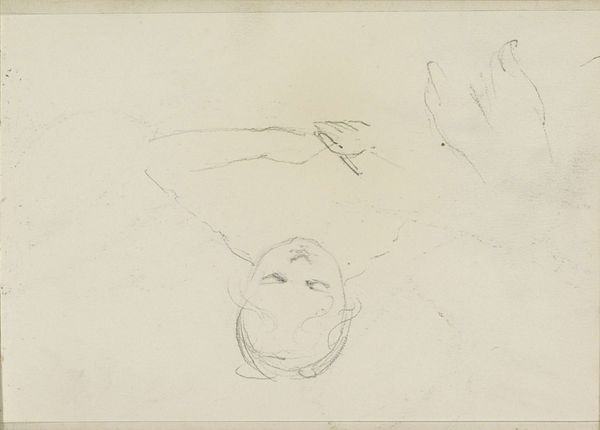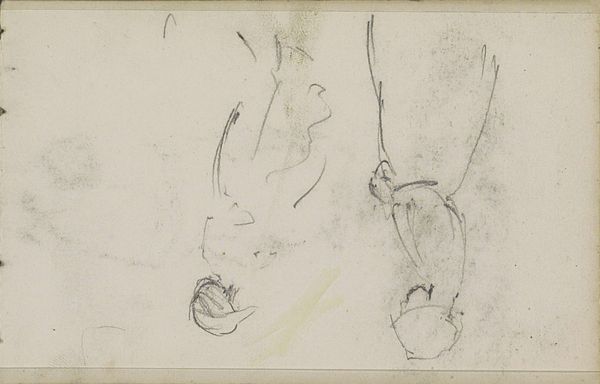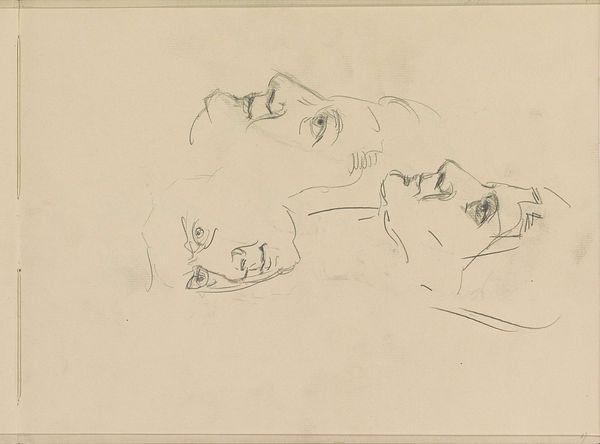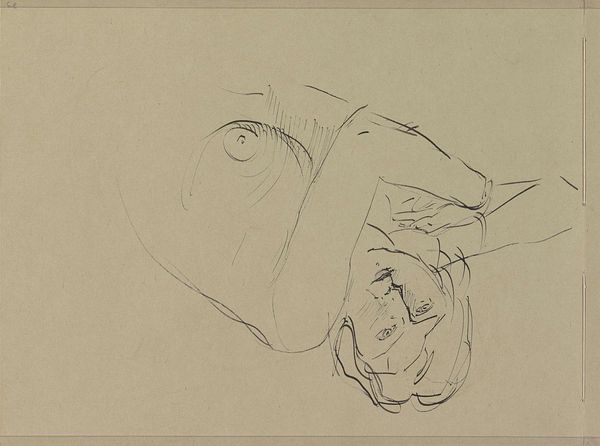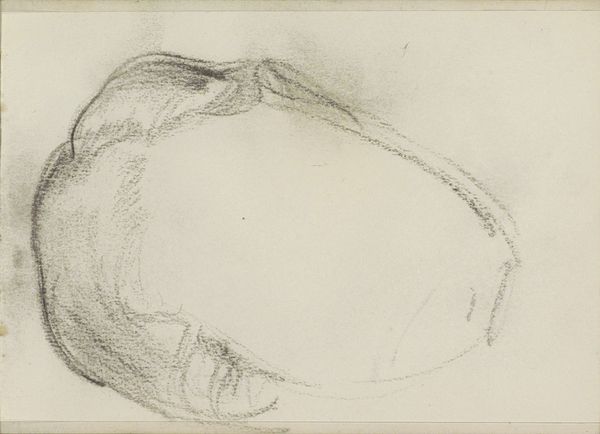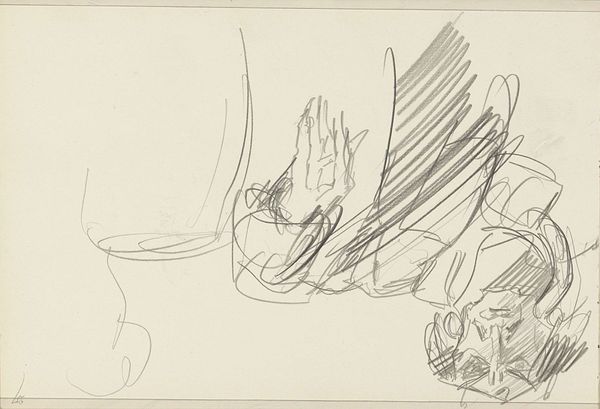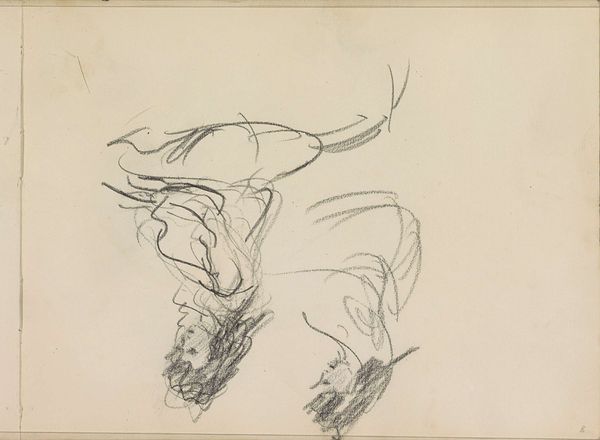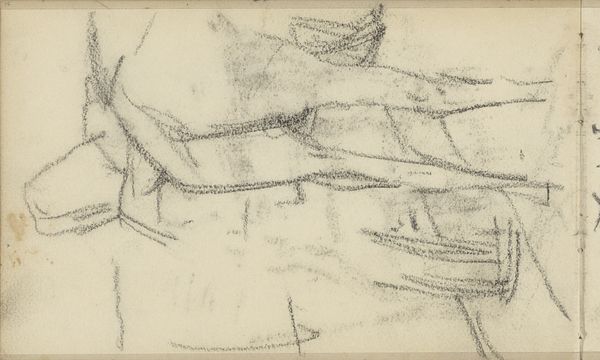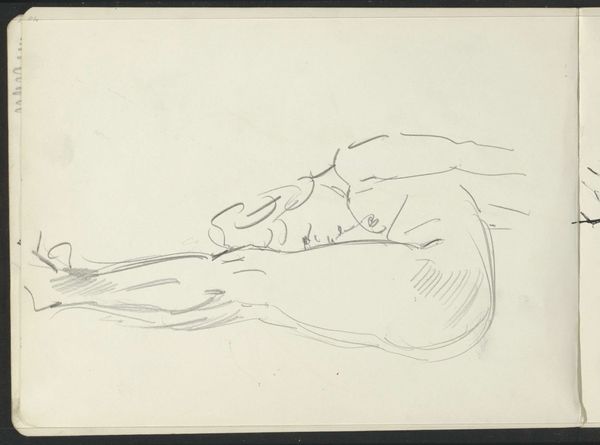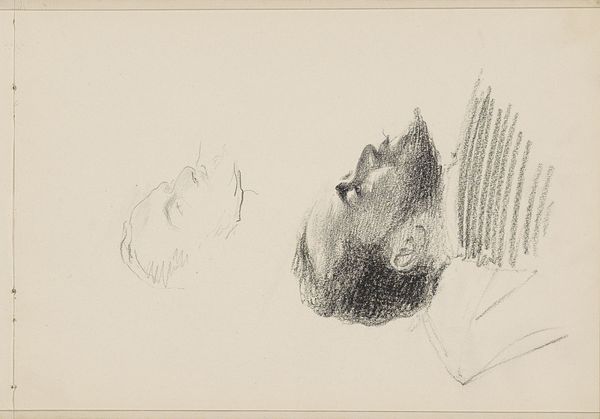
drawing, pencil
#
portrait
#
drawing
#
impressionism
#
figuration
#
pencil
Copyright: Public Domain: Artvee
Editor: So, here we have Paul Cézanne’s pencil drawing, "A Man Seen from Behind," created sometime between 1880 and 1883. It's a quick sketch, really. It feels…incomplete. I’m intrigued by the multiple marks. How do you interpret this work? Curator: The incompleteness, as you call it, is precisely where its power resides. This seemingly simple sketch isn't merely about depicting a man; it’s about the *idea* of a man, filtered through memory and impression. Look closely at the fragmented lines—they aren't just outlines, are they? They carry a symbolic weight. Cézanne captures the essence of absence and anonymity, which reverberates culturally, wouldn't you say? Editor: Absence? I was so focused on the rough quality of the lines that I missed that. How does it connect with cultural memory? Curator: Well, consider the time in which this was created. Rapid industrialization led to feelings of alienation, anxieties that individuals could be overlooked, or fade away, so we get the motif of someone facing away. There's the question of why the figure remains partially concealed. Editor: Oh, I see. Almost like a rejection of traditional portraiture and its focus on the individual? Curator: Exactly. And that itself speaks volumes about cultural shifts, a turning away from old ideals, creating space for new expressions. Editor: I never thought of a sketch carrying so much symbolic weight. I will never look at an "incomplete" artwork the same way. Curator: Precisely. Now you know how to read an image like a cultural text!
Comments
No comments
Be the first to comment and join the conversation on the ultimate creative platform.
